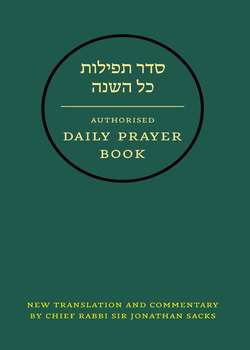Читать книгу Hebrew Daily Prayer Book - Jonathan Sacks - Страница 19
4. CREATION, REVELATION, REDEMPTION
ОглавлениеONE STRUCTURAL PRINCIPLE OF THE prayers deserves special attention, since it touches on the fundamentals of Jewish faith. In the twelfth century, Moses Maimonides enumerated the Thirteen Principles of Jewish Faith. They appear in the Siddur in two forms: the poem known as Yigdal (page 12) and a prose version after the end of the morning service (page 164).
Rabbi Shimon ben Tzemach Duran (1361–1444) pointed out that Maimonides’ principles could be analysed and categorised into three themes: 1. the existence of GOD, the Creator (Principles 1–5: GOD’S existence, unity, incorporeal-ity and eternity, and that He alone is to be worshipped); 2. Divine revelation (Principles 6–9: prophecy, Moses’ uniqueness, the GoD-given character of the Torah and its immutability), and 3. GOD’S justice (Principles 10–13: GOD knows all, repays us according to our deeds, and will bring the messiah and the resurrection of the dead). The philosopher Franz Rosenzweig summarised these in three words: creation, revelation, redemption. Creation is the relationship between GOD and the universe. Revelation is the relationship between GOD and humanity. Redemption occurs when we apply revelation to creation.
The movement from creation to revelation to redemption is one of the great structural motifs of prayer. One example is the three blessings in the morning service, surrounding the Shema and leading up to the Amidah (pages 62–74). The first is about the creation of the universe in space and time; the second is about the revelation of the Torah; and the third is about the miracles of history, ending with the words, “who redeemed Israel”.
The three paragraphs of the Shema display the same pattern. The first is about creation (GOD’S unity and sovereignty), the second about revelation (acceptance of the commandments), and the third about redemption (“I am GOD your LORD who brought you out of the land of Egypt”).
The weekday morning as a whole is constructed on this principle. First come the Verses of Praise, taken from the Book of Psalms, with their majestic vision of creation. Then follows the central section – the Shema and its blessings, leading to the Amidah – in which we sit, then stand, in the immediate presence of GOD (revelation). Finally we come to the concluding prayers with their central line, “A redeemer will come to Zion” The second paragraph of Aleinu is likewise a vision of redemption.
The pattern is repeated yet again in the Shabbat evening, morning and afternoon prayers. On Friday evening, in the central blessing of the Amidah, we speak of the Shabbat of creation (“the culmination of the creation of heaven and earth”). In the morning we refer to the Shabbat of revelation (when “Moses brought down in his hands the two tablets of stone”). In the afternoon we anticipate future redemption (when “You are one and Your name is one” and the people Israel are again “one nation on earth”).
Rav Joseph Soloveitchik suggested that the same sequence is the basis for the threefold structure of the weekday Amidah: praise, request, thanks. Praise “emerges from an enraptured soul gazing at the mysterium magnum of creation” request “flows from an aching heart which finds itself in existential depths” and thanksgiving “is sung by the person who has attained, by the grace of GOD, redemption.” Creation leads to praise, revelation to request, and redemption to thanksgiving.
In these multiple ways, prayer continually reiterates the basic principles of Jewish faith.
